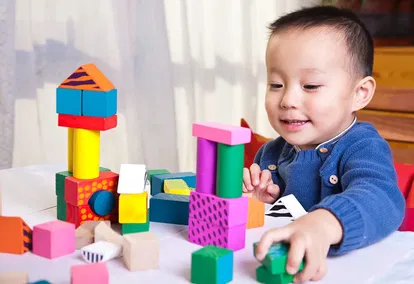
No two snowflakes are the same. There are times when I feel my classroom is full of “snowflake” preschoolers. They are all so different! We can recognize this diversity in our classroom as we consider at least four learning styles: visual, tactile, auditory, and kinesthetic.
Each person is their own mix of these learning styles. By balancing our session plans to teach to each learning style, our preschoolers will have the opportunity to learn in the way that best suits them.
In this article we will look at visual and tactile learners. In Part 2, we will explore auditory and kinesthetic learners.
Visual Learners
Visual learners learn best by seeing. They tend to think in pictures, processing information by creating pictures in their mind. To help the visual learner, the leader may choose some of these strategies:
- Use books and colorful, realistic pictures to illustrate your concept area or missions area. Reduce visual overload by avoiding the clutter of too many pictures and posters in the room.
- Demonstrate what you want the child to do so he can see how to play the game or make the craft or follow instructions.
- Allow the child to draw a picture of some aspect of the story to see and process story details.
- Use descriptive words to help the child see what you are saying.
- Bring real objects for the child to see. Alternatively, find appropriate online videos or another outlet to show the culture or natural world of the missions area.
- Visual learners like color. Use it to draw their eyes to what you want them to see.
- Guide the child to act out stories or use fingerplays and songs with motions. These help the child see the story and meanings of words.
Tactile Learners
Tactile learners need to touch things to understand them. They need to use their hands to explore the concepts and ideas they are learning. Hands-on learning activities are a must for these preschoolers. Often visual learners are also tactile learners. Some of the same strategies work for both learning styles. Try some of these strategies for your tactile learners:
- In art projects, let preschoolers cut, glue, assemble, finger paint, or draw their ideas.
- When possible, use real objects for the child to touch and hold.
- Build with blocks or other materials.
- Model with play dough.
- Use experiences with water, sand, bubble wrap, sandpaper, fabrics, shave cream, and other textured items (supervise closely).
- Sort and count objects, using real objects when possible.
- Provide puzzles and other things to put together.
- Allow the child to act out a story himself, with puppets, dolls, or felt board pieces.
- When a child must be still, allow her to hold an object or use a stress ball to keep fingers busy while the child concentrates on what is being said.
By intentionally planning for different learning styles, we are recognizing the uniqueness of each child. And doing so honors God who makes each of us unique.
by Vivian Howell